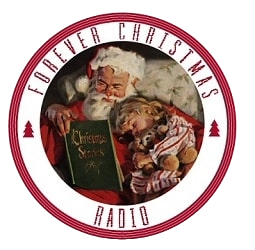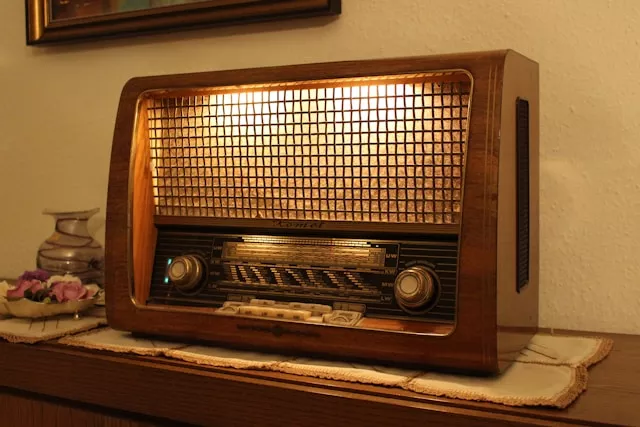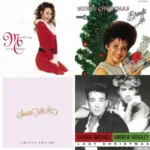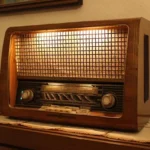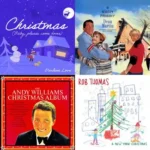Each year, millions of people across North America find themselves instinctively reaching for the dial—or pressing the FM button on their dashboard—when the holiday season rolls around. The sound of Christmas music on the radio becomes more than just background noise. It marks a change in season, a return to ritual, and a sense of warmth that digital playlists can’t always replicate. Whether you’re driving through snow-covered streets, baking cookies in the kitchen, or wrapping gifts late into the night, holiday music on terrestrial radio continues to be a companion.
But how did this annual tradition begin? And why has it remained so powerful, even as technology has transformed the way we consume music? The answer lies in a century-long evolution of broadcasting, music formats, consumer habits, and a deep emotional connection to the season.
Holiday Programming Before the Flip (1920s–1960s)
Christmas-themed content on the radio can be traced all the way back to the birth of commercial broadcasting. In the 1920s and ’30s, national networks like NBC and CBS would air special Christmas Eve programming—often featuring live choir performances, Bible readings, holiday radio plays, and big band music. These were meant to be communal listening experiences in a time when the family radio was a centerpiece in the living room.
However, Christmas programming back then was rare and mostly centered around specific holiday hours. It wasn’t music-heavy either. Instead, it focused more on narrative storytelling and religious themes. Radio wasn’t yet a medium associated with musical mood-setting—it was a source of news, drama, and variety entertainment.
By the 1950s and early ’60s, holiday-themed music started to get a bit more airplay—thanks in part to artists like Bing Crosby, Nat King Cole, and Perry Como, who helped define what a “Christmas classic” sounded like. But the music still only played sporadically—perhaps a few hours on Christmas Eve or morning. The idea of a full seasonal music format had not yet taken hold.
Laying the Groundwork: The 1970s and the Rise of FM
The 1970s were pivotal for radio in general. FM was overtaking AM as the dominant space for music broadcasting, and stations began locking into specific formats: Top 40, soft rock, adult contemporary, country, and more. With format radio came more targeted programming and a growing awareness of listener habits and seasonal behaviors.
This decade also saw the release of now-iconic holiday tracks that leaned more pop than sacred—like John Lennon’s “Happy Xmas (War Is Over),” Elton John’s “Step Into Christmas,” and the Carpenters’ “Merry Christmas Darling.” These songs helped expand the definition of what holiday music could be.
Still, stations used these tracks sparingly. A few days before Christmas, you might hear one or two festive songs per hour. But as more households owned multiple radios—in cars, bedrooms, and kitchens—stations began to realize the potential of creating a “holiday vibe” through music.
Testing the Waters: The 1980s and Strategic Programming
In the 1980s, radio programming became increasingly strategic. The rise of audience research and rating systems meant stations were more focused on attracting and retaining listeners. Adult contemporary and “beautiful music” stations—those that played soft instrumentals or mellow vocals—were especially well-positioned to test Christmas music’s appeal.
Stations started dedicating weekend blocks in December to festive music, and some experimented with uninterrupted music on Christmas Eve. These changes were subtle but important. They indicated that listeners wanted a familiar, relaxing holiday soundtrack—and they were willing to spend more time tuned in when they got it.
Syndicated specials like Casey Kasem’s American Top 40 Christmas and Christmas Across the Lands also grew in popularity during this time. Local stations began seeing the benefit of letting holiday music dominate a few hours or even a full day. But the real breakthrough would come in the next decade.
All-Holiday, All the Time: The Breakthrough of the 1990s
The true turning point came in the mid-1990s, when a handful of stations took a bold leap: switching entirely to Christmas music for several weeks. One of the first to do it was WEZN-FM in Bridgeport, Connecticut, in 1996. KESZ in Phoenix and WNIC in Detroit soon followed.
Initially, these flips were viewed as gimmicks or attention-grabbing stunts. Critics questioned whether audiences would tolerate weeks of nothing but holiday tunes. But the results were impossible to ignore—ratings soared. Not only were people tuning in more often, they were staying longer and coming back daily.
For many listeners, this was exactly what they wanted. Instead of relying on cassettes, CDs, or recording their own mixtapes, they could simply turn on the radio and get a carefully curated mix of beloved classics and modern hits.
Programmers also realized that the music created a positive association. People listened while decorating, shopping, commuting to family gatherings, or attending holiday parties. The sound of the season had become emotional fuel—and advertisers took notice.
The Format Goes Mainstream: 2000s
By the early 2000s, the all-Christmas format had gone mainstream. Stations in dozens of cities began flipping as early as mid-November. Some even experimented with Halloween-day switches, especially in competitive markets.
Major adult contemporary stations like KOST in Los Angeles, WLTW in New York, and WLIT in Chicago embraced the format and leaned heavily into listener engagement: contests, “Christmas in July” countdowns, on-air requests, and charity tie-ins. The format became a marketing tool as much as a ratings winner.
The music itself was a mix of old and new. Classic crooners like Frank Sinatra and Brenda Lee sat comfortably beside newer favorites from Josh Groban, Mariah Carey, and Celine Dion. Carefully constructed playlists balanced tradition with variety, keeping the listening experience fresh while still predictable enough to feel comforting.
Dominating the Holidays: 2010s to Today
In the 2010s, holiday radio became a full-blown seasonal institution. Stations now teased the flip for weeks in advance, counting down on social media and prompting listener polls to determine the “perfect” date to go all-holiday.
The music mix has only broadened. In addition to evergreen hits, stations now include contemporary pop stars like Kelly Clarkson, Michael Bublé, Ariana Grande, Meghan Trainor, and Pentatonix. Some tailor their playlists based on local tastes—leaning into country, R&B, or Christian hits where appropriate.
Despite the rise of streaming services like Spotify, Apple Music, and YouTube, FM radio maintains its seasonal dominance. Terrestrial radio is still free, easily accessible in cars, and doesn’t require apps, logins, or subscriptions. According to Nielsen, stations that flip to all-holiday often double or triple their audience share during the Christmas season.
In cities like Detroit, Los Angeles, and St. Louis, Christmas-flipping stations have routinely topped the ratings every December for more than a decade. It’s not just a format; it’s a holiday tradition.
Why Listeners Keep Coming Back to Holiday Radio
The success of seasonal FM programming isn’t solely about music—it’s about how it makes people feel. Decades of consistent patterns have made Christmas radio a core part of how many people experience the holidays.
- Nostalgia: Hearing the same songs your parents or grandparents played creates a connection to the past.
- Simplicity: No searching, no playlists—just a button press and instant atmosphere.
- Local connection: Stations provide weather updates, community events, and hometown ads that ground listeners in their environment.
- Mood boost: Numerous studies show that holiday music can reduce stress and improve emotional well-being.
- Tradition: Having music on while decorating the tree, baking, or opening presents is part of the ritual.
Final Thoughts: A Soundtrack That Endures
While technology keeps evolving and new platforms emerge, terrestrial radio’s role in shaping the sound of the season remains remarkably consistent. FM stations that flip to holiday music don’t just broadcast—they participate in a shared cultural experience that spans generations.
For many, tuning into that first Christmas song on the radio is the moment the season truly begins. And as long as people continue to seek connection, comfort, and a little magic in December, there will be a place on the dial for holiday music to shine.
